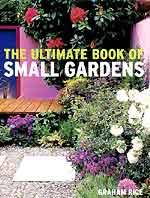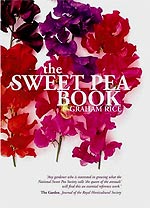
Natives and invasives
ČŢAmongst the fascinating results in the research report on invasive species in the Winter 2006 issue of Perennial Plants, one alarming statistic stood out: almost half the respondents (41.3%) ĺ─˙believed that local, state or federal laws should be passed to prevent the sale of non-native exotic plants in their areaĺ─¨. That is, almost half of the gardeners surveyed believed that they should not have been allowed to buy most of the plants they grow in their gardens. There go the daylily and hosta markets. This one statistic points, I believe, to a number of problems that pervade discussions of invasives and natives ĺ─ý in particular in relation to definitions, and to education.
ČŢDefinitions
ČŢFirstly, what exactly do we mean by ĺ─˙nativeĺ─¨ and ĺ─˙invasiveĺ─¨ and is there nothing in between? In 1994 the Federal Native Plant Conservation Committee agreed that a native plant is one "that occurs naturally in a particular region, state, ecosystem, and habitat without direct or indirect human actionsĺ─¨. Often this is expressed in a kind of shorthand: a plant is native if it was present prior to contact with Europeans. But present where?
The genus Echinacea is native to the United States, but this does not mean that all Echinacea species are native throughout the country. In fact, echinaceas are absent from a number of states, mainly in the west, and uncommon in others. So when a nursery flags echinaceas as native the impression is given that all can be planted as native everywhere. But when gardeners buy plants of a species that is not native to their area and plant it, they are not planting native plants. And when they plant a double-flowered cultivar, a variegated cultivar or an interspecific hybrid such as those superb recent Echinacea hybrids from ItSaul Plants or Chicago Botanic Garden they are most definitely not planting natives ĺ─ý whatever it may say on the retailerĺ─˘s website.
Unfortunately, some nurseries have only the haziest idea of which plants are native ĺ─ý even in the most general sense. Cynics say this represents the marketing department getting the better of the horticulturalists, some say itĺ─˘s simply lack of knowledge. But in the last couple of years Iĺ─˘ve noted these examples of perennials wrongly flagged as native (amongst others, and in addition to those echinaceas), from prestigious mail order nurseries at one extreme to local native plant specialists at the other.
- Aster x frikartii ĺ─˛Monchĺ─˘ČŢ This is a hybrid between A. amellus (from Europe and Asia) and A. thomsonii (from the Himalaya), selected in Germany.
- Heuchera ĺ─˛Caramelĺ─˘ This hybrid was raised in France and has in its background blood from at least three different species native to opposite coasts of the United States.
- Filipendula ĺ─˛Kahomeĺ─˘ This is considered to be a hybrid between two Japanese species.
- Phlox paniculata ĺ─˛Goldmineĺ─˘ This is a Dutch gold-variegated sport of the paler variegated ĺ─˛Silvermineĺ─˘, itself a sport of ĺ─˛Popeyeĺ─˘ which is a sport of the old favourite ĺ─˛Bright Eyesĺ─˘.
ČŢLetĺ─˘s be clear, interspecific garden hybrids and variegated forms bred on other continents are not North American native plants. By contrast with this misleading information, many nurseries are doing a valuable job in propagating and making available truly native plants, often emphasising the area in which they are genuinely native.
An increasing number of eagle-eyed plantsman are also making more gardenworthy selections of native plants; it is a mainstay of the business run by Don Jacobs at Eco Gardens. Fine recent introductions of this sort include the variegated Polemonium reptans ĺ─˛Stairway to Heavenĺ─˘ from the New England Wildflower Society, and the dark-leaved Geranium maculatum 'Espresso' from North Creek Nurseries; both feature in the excellent American Beauties promotion. Such cultivars are invaluable for gardeners wanting to grow enhanced forms of natives in gardens, but having been selected specifically because they are not typical theyČŢ should not be used in restoration projects and in other natural situations as if these cultivars were themselves generally native.
What is an invasive plant?
And what do we mean, exactly, by an invasive plant?ČŢ Some organisations and activists confuse the issue by muddling the distinction between non-natives and invasives, but The Mid-Atlantic Exotic Pest Plant Council gets it right, defining invasives as plants which ĺ─˙grow aggressively and spread rapidly, displacing native plantsĺ─¨. So, quite rightly, natives like the New York fern and hay-scented fern, can also be invasive.
But many gardeners are beginning to equate ĺ─˙exoticĺ─¨ with ĺ─˙invasiveĺ─˘, a tendency which is bound to impact on sales of many familiar garden plants. So it may be that by asking a question about ĺ─˙non-native exotic plantsĺ─¨ in the survey, which was primarily focused on invasives, the issue is again muddled. Did respondents really understand the question? We need to be clear in defining our terms.
And what about the thousands of plants which are neither native nor invasive in a given area, plants which just settle into a self-sustaining colony harming no one and smothering nothing? We need to popularize the term ĺ─˙naturalizedĺ─¨, to cover plants which are not native but which maintain themselves in the wild without causing trouble ĺ─ý which are the vast majority of non-native plants in any given area. Otherwise, we are in danger of encouraging gardeners not to buy most of the plants that our nursery members actually sell and which are not invasive. Proven invasives, like purple loosestrife, should not be sold (although this still is) but we need a more balanced approach to the whole issue. Which is where education comes in.
Education
When gardeners buy plants cited as native, they expect the plants to be native in their area but as this is often not the case more good information is paramount. Echinacea purpurea is native to much of the east and south but plant it in California and youĺ─˘re planting an alien species. Gardeners and landscapers need to understand the clear distinction between native, invasive and everything in between.
And while thereĺ─˘s a great deal of sometimes extraordinarily fervent rhetoric about invasives taking over the country, and while they are more common in areas where people are most likely to see them (along roadsides), the PPA can help by promoting a more balanced view which is not only more realistic but which also protects the businesses of members selling perfectly harmless non-native plants.
The survey reported in Perennial Plants revealed that top of the list of organisations which gardeners felt should test and report plant invasiveness are nurseries and greenhouses. But the aim of most nurseries is to make money by selling plants, and few have the scientific background, the time or the inclination to do this detailed work.
The USDA plants website is invaluable in distinguishing clearly between plants which are native and those that are not ĺ─ý and also at giving citations for plants which are classified as invasive or as noxious weeds in individual states. Sate-by-state lists of natives and invasives can be generated, even lists for individual counties, and many individual states also have websites dedicated to their native flora.
But although nurseries often have the best individual contact with gardeners and are, in some ways, best placed to discuss this issue they would surely appreciate help. Help which the PPA could provide. The PPA could easily generate downloadable lists of plants which are confirmed as invasive in each state by authoritative sources; the information is out there, waiting to be presented to members. A guidance sheet on the responsible planting of cultivars of native plants would also be valuable. Better than taking my word for it, perhaps the next research the PPA could sponsor should be into how best to educate both nurseries and landscapers, and the gardening public, about true natives and true invasives.
Otherwise, without clear definitions and good education, we risk finding more and more gardeners turning away from hostas, daylilies and other popular perennials.
|
|
   






 
 
  
All text Čęcopyright Graham Rice 1999-2006, All images Čęcopyright Graham Rice/gardenphotos.com or judywhite/gardenphotos.com 1999-2006.
All rights reserved. |

|
|




